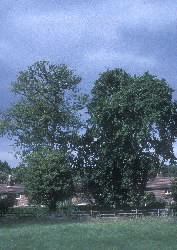 Since 1987 the Forestry Commission has monitored annual changes in the condition of Britain’s forest trees by assessing the status of:
Since 1987 the Forestry Commission has monitored annual changes in the condition of Britain’s forest trees by assessing the status of:
- Oak
- Beech
- Scots pine
- Norway spruce
- Sitka spruce.
This is performed via a network of fixed monitoring plots distributed throughout the country.
Plots consist of 24 trees, located in four sub-plots of 6 trees and each tree is evaluated for a range of health indicators. These include the incidence of flowering and fruiting and damage by insects or fungi, but the overall assessment of health is based on crown density. This is an estimate of the degree of transparency of the crown (crown density), which is used to provide an index of tree condition.
Analysis of the crown density of oak (and other species surveyed) is reported each year.
